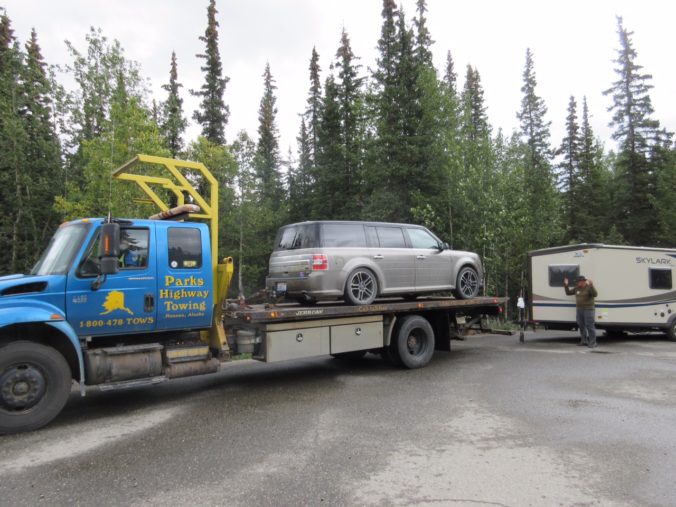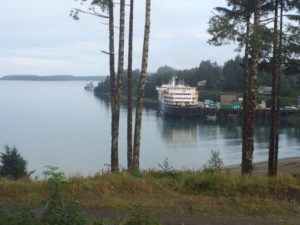Sep. 1-2. It appeared that our car might finally be repaired by noon on Thursday, but it still needed to be checked by the shop manager. We also learned that despite replacing both the low pressure (in the gas tank) and high pressure fuel pumps, the electronic control module, which is the unit subject to recall by Ford, was not replaced. So we would be driving home (through even less populated parts of BC) using a part that could fail at any moment.
We ended up deciding to buy a new car, a Lincoln MKT as pictured in the feature photo. The dealer had made up a sales proposal on Wednesday and we had time that evening to do some research. We learned that is essentially Lincoln’s version of the Flex—just “sleeky” vs. “boxy.” This is a 2015 model, but brand new (unused). So it was subject to substantial rebates by Ford and the dealer. Basically we have the same car, but 36,000 miles newer and with four more years of warranty coverage. As a new car, it needs to be driven “gently” for the first 1000 miles, so as we left Fairbanks we have kept it at 50 mph or below, which it probably somewhat irritating to the drivers behind us on this 65 mph road.
We managed to get about 150 miles south from Fairbanks, stopping at a rest area near the Tanana river somewhere between Delta and Tok. Cynthia made pasta and we considered what we can to with the rest of our itinerary. It appears we can delay returning to Olympia to September 12 (vs the original target of Sept. 2). Here are the main points:
Sep. 3-4-Arrive Haines
Sep. 5-6 Ferry to Skagway, ride the White Pass and Yukon Railway
Sep. 7-12 Enroute through British Columbia on the Cassier Highway to Olympia (2100 miles from where we are right now.





















Recent comments